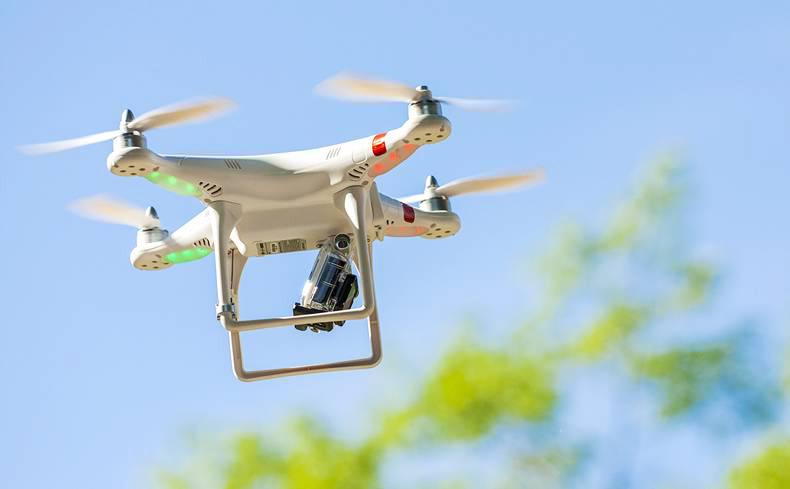The wide range of technologies that comprise precision agriculture have enormous potential to contribute to future agricultural production. There is a sound logic to many of the approaches being developed, which will lead to more precise and targeted management and mechanised/automated operations, ultimately leading to more efficient production.
In Teagasc, we recognise this potential and much of our research planning is focused on developing this more precise approach using sensor, analysis and decision support technologies.
Should these technologies be adopted now? The simple answer is only if they can pay their way. Some of these technologies can be expensive and can also require a considerable time investment to get them up and running.
So care is needed to differentiate between hype and technologies that genuinely justify their adoption. In many cases, precision farming tools are presented as technologies which will bring clear-cut benefits and that the only barrier is that growers are unwilling to adopt them.
This is frequently not true, as many technologies are not fully developed and may not bring a return on investment, while others may bring benefits but could need considerable scale to justify their purchase. A couple of examples in the crop area follow:
Drones scanning crops
Drones are receiving lots of attention lately and crop-scanning drones can now be simply sent to scan fields with relatively little operator skill needed. But what can they do? For the most part they can either take ordinary pictures or they can carry spectral sensors which can indicate the level of biomass and N uptake of a crop.
The challenge is how to make use of this information in management decisions. While there is certainly potential to use this information in the future, its beneficial use at the moment is quite limited.
Crop reflectance
Crop reflectance data can be captured by drone, satellite or tractor-mounted sensors and can give an indication of crop nitrogen uptake. This forms a potential basis for nitrogen recommendations and there are commercial services used in other countries, and available in Ireland, based on crop reflectance. However, to date, the payback from using this technology is relatively limited in countries where the system has been trialled. These systems have not been comprehensively validated in Ireland.
While crop N uptake will have a role to play in managing N application, it’s likely that a lot more information about N supply from the soil will be needed.
So is crop reflectance of use now? It certainly can give interesting information about crop variability in growth and N uptake, but making use of that data is problematic. While growers who use organic manures may get an extra read on the N status of their crops, N prediction systems based on crop reflectance will need a lot more development to warrant adoption by most growers.
Auto-steer
Auto-steer systems, where GPS-controlled tractor or combine steering ensures accurate pass or bout widths, have received lots of attention in recent years. They have the potential to improve machinery operating efficiency by reducing the overlap in cultivation and sowing equipment and by helping ensure a consistent feed of crop into a combine with a very wide header. However, depending on the level of accuracy required, these systems can be quite expensive, with the most accurate RTK systems costing €20,000 per unit.
Also, the efficiency gains can be over-estimated by manufacturers. For example, auto-steer may help achieve a 95% fill of the combine header at all times, compared with perhaps 85% with manual control. Manufacturers may imply this equates to a 12% improvement in overall combine efficiency, but in reality the operator will simply drive a little faster to largely compensate for the reduced header fill. Similarly, with cultivators and drills, some of the auto-steer gains can be achieved by accurately setting bout-marking scribes.
There is no doubt that accurate auto-steer systems can make the operator’s task easier and will give some efficiency gains over manual systems.
However, significant scale may be needed to justify investment as they are currently quite expensive. In future, reduced auto-steer costs and crop production gains from controlling traffic will make them easier to justify.
GPS headland switching
Automatic systems for switching on and off sprayer booms and fertiliser spreaders on headlands are getting more common. It can be quite difficult to accurately turn on /off spreaders and sprayers at headlands, particularly with wider tramlines, and this is compounded when using trailed equipment. This can result in both over- and under- application of inputs. In these situations, a good GPS-based system will do it more accurately. However, these systems are expensive and they need to be justified. Smaller or medium-sized growers may not be able to justify this expenditure.
Green area index measurement
In contrast to the relatively expensive technologies considered above, other precision crop tools are cheap and offer very real gains.
The Green Area Index app for mobile phones allows the leaf or green area of an oilseed rape crop to be calculated from a mobile phone image.
A significant body of research has shown that managing spring crop nitrogen based on the amount of leaf on the oilseed rape crop in early spring will allow the subsequent crop canopy to be optimised.
The phone app is free and gives an excellent estimate of green area and the subsequent management approach is research-based. The use of this technology is a clear win-win situation, with no cost and clear benefits.
Caution
There is no doubt that a more precise approach to improved crop management based on new sensor and analytic technologies will be beneficial in the long term. But today, farmers need to be cautious when it comes to significant expenditure and avoid getting overwhelmed by the hype.
Some technologies are developed and proven; others have a long way to go. Like any other input, any decision to invest in these technologies must be justified by efficiency or performance gains that are research-proven and which can be costed and valued.






 This is a subscriber-only article
This is a subscriber-only article











SHARING OPTIONS: